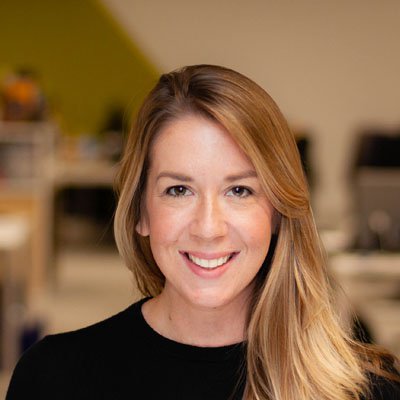In conversation with artist and trauma informed practitioner, Jain Boon from the HARP (Health Arts Research People) programme.
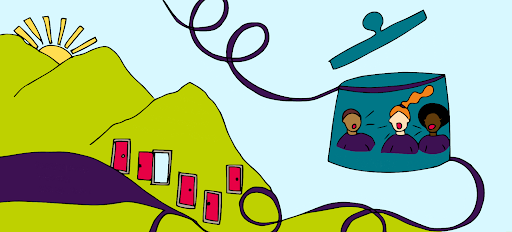
One of the greatest challenges in our modern, global world is that we can easily feel isolated or disconnected from each other. A lifetime can go by without ever being touched by the experiences or problems of others. But humans are social creatures, we crave connection and we are constantly finding ways to stay connected – through screens, across borders and throughout global pandemics. We innovate and we actively seek out experiences that make us feel something and that transform how we connect to the complex world around us.
The People Powered Results (PPR) team believes that creativity can help us make sense of complexity. Whether as individuals making sense of our place in the world or solving problems within complex systems, creativity can be a catalyst for transformation. The conditions needed to create change can shift but creativity is a constant tool that shines a light in places that have been left in the dark for far too long. By tapping into our own individual creativity, we can conjure up feelings that spur thinking and move us to action to transform the world around us.
Think about the last time you were moved by a work of art. Was it a song that struck a chord, a play that pushed your boundaries, or a novel that stirred your soul? Art expands our minds, surfaces feelings, and ignites our imagination. It begs us to believe in something else, another time, another place, another state of being. When we are moved by art, our feet may stay firmly planted in one place, but our imagination is transported elsewhere. This transformative experience is powerful and it connects us; to ourselves and to others.
For two years, the PPR team has been a partner on the HARP programme – Health, Arts, Research, People. HARP is an innovation and research partnership between Arts Council of Wales, Nesta and Cardiff University’s ‘Y Lab’ to explore how the arts can improve people’s health and wellbeing and support our health and care systems. PPR has supported the programme to build cross-sector collaborations between passionate artists and driven individuals working on the frontline of a complex health and social care system.
The artists we work with often find themselves navigating the intersection between their creative practice, the health and care system and the innovation landscape. Jain Boon is one of those artists. Jain was an artist on a HARP Seed team. The team tested new approaches to using creativity to reduce stigma and isolation for rape and sexual abuse survivors. Jain’s 30 year career is one that has cleared pathways for people from all kinds of places and backgrounds to be transformed by experiencing art. She has worked on some of today’s most challenging issues – domestic abuse, adverse childhood experiences and women’s rights – to support people to unlock their ability to think critically and creatively.
I sat down with Jain to talk about the transformative power of art and how creativity can help us make sense of a very complex world. We were accompanied by Polly Redfern, a designer, who captured our conversation through illustrations. This is our conversation.
What is the personal journey you went on to becoming a trauma informed artist?
When I was leaving drama school I knew I wanted to make a change in the world and just being an actor wouldn’t be enough, so I found myself in the world of theatre education, community theatre, and it became about raising issues and questions. This was a place where I could lift the lid on things I care about, like women’s politics and lesbian and gay support for miners in Wales. And the pieces of work were looking at trauma, although I didn’t always know it at the time. But the idea was always to invite people to reflect on what life is like for others and I wanted to ensure that those who did not have a voice were heard.
I’m on my own journey. After so many years, I’ve begun to understand what my own trauma is. Now I’m training professionally as a somatic experience practitioner looking at safe ways to release that traumatic energy that gets trapped in the body after a traumatic experience.
As an artist, how did you find your own place as a trauma informed practitioner in the health and care system?
For many years I was knocking on a door that seemed to only open for clinicians. Exploring trauma and having access to training seemed to be things only a certain type of person could do: professionals, therapists, or clinicians. As an artist, this door isn’t always open to you. And when somebody does open a door for you, that can create change. This first happened for me when the ACE Support Hub invited me to work with them. They were looking to connect with people who had developed knowledge and skills on adversity and trauma.
What can artists do that others in the health and care system can’t do? Why does the system need creativity?
Creativity changes the landscape. It touches us differently and connects with us on an emotional level. It doesn’t skim the surface. It allows us to deepen our thinking. Looking at impactful moments in our lives, that we can share with others. So our individual creativity might appear to be something quite small but it becomes amplified when we share it with others. It connects us with the soul of the world.
What I’ve loved about HARP is that I’ve felt that connection with another artist, with a health team and with a group of people. And we’ve connected around a common purpose of wanting to make change.
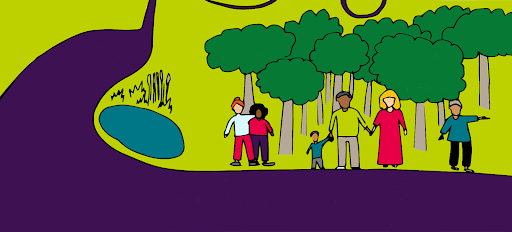
As a practitioner, what do you see or hear when people begin to connect to the soul of the world?
I see people connecting to their strengths. An expansion in the body. We feel confident, we feel joy, we feel delight, we feel a sense of agency…all those things because we’re connected to another human. And in that moment we can take a collective breath together. When trying to combat stigma, loneliness and isolation, which has been exacerbated by the pandemic, we need those creative spaces to connect even more.
In the People Powered Results team, we often think about change on two levels: systems transformation vs internal transformations that people go through. Do you see a connection between the individual and the system?
We all have a stake in the system being ‘healthy’. What you want is that people at the ‘higher end’ of that system recognise the power and strength of the people within it to make change. It can be really scary knocking on a door and saying ‘this is what I need’ but when you can do it together, it feels mighty. On a big scale we’re talking about creating moments where people can say what they need when it comes to their own health and wellbeing. Working with and alongside people, you realise people hold their own expertise in that lived experience.
I would like health organisations to realise the power they have within their systems through the people. And once you’ve moved forward and you’ve said to the people that access your services “we want you to be part of change” something has shifted and you can not step back from that. You’ve been moved.
Things in systems need changing…but it starts with how we see each other, how we respond to each other, how we think about each other. The stories we tell each other are important and connect us and can create change.
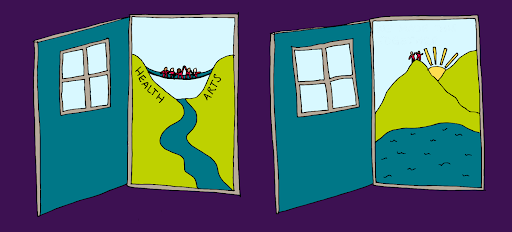
What difference do you think could be made if more attention was given to the power of individual transformation and the impact that can have on the system?
In the HARP Seed work with New Pathways, we were inviting people to respond really quickly to something that touched them very deeply. It’s very much something their body knows even if they’ve never articulated it before. And wow, as an artist you’ve unlocked something in someone else…and that feels so powerful. Artists invite the individual to be a part of the system by creating an imaginary bridge that someone can cross and become part of something on the other side.
Trauma manifests itself in our relationships, in our spaces, in the world. Trauma separates us from each other…I would love to get people who are making policy in the room with you so they can see what creativity and the arts can do. Art and creativity is a magnetic power that brings people together and the space ultimately feels very different and touches us emotionally. And for a moment we are transferred to some other place that lets us feel.
Art can be constructive or deconstructive. Thinking about the system, what do you think might need to be torn down or deconstructed before something new can be created?
Artists and health organisations work differently. As artists, we know we can invite people to take safe, supported risks and we need to make space for silence. Artists can hold that space. People need time to think and feel it in their bodies. Artists sit in the uncomfortable a lot. There is an elasticity of the arts. I think this is something health could take from working together more with the arts.
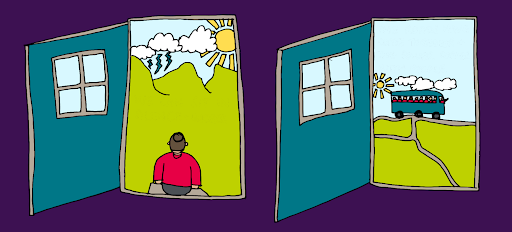
As an artist, do you recognise where your own power exists in the health and care system?
Wherever it is, it’s not on my own. I feel internal power but that has come from being with others, being connected to others and not feeling alone. I did a bike ride around the Nile valley and that pushed me to the limits. And yes, sometimes there is a need to do things on your own to feel that sense of achievement and power by yourself. But it’s when all the roads came together that I realised I’m on the right path. The connectedness makes things feel possible.
HARP has been a process of understanding everybody’s role within the system…whether its sponsorship, permission or data. The way artists are continually challenging, that’s what HARP was doing for me. To really feel people’s experiences and to step into a challenge and be a part of it…
Any advice you would give to other artists or health practitioners stepping into a collaboration or partnership for the first time?
When you’re starting something new, there is always discomfort. Let’s take one step at a time and do it with hopefulness and belonging and the feeling that we’ll make change…the feeling that somebody will listen.
